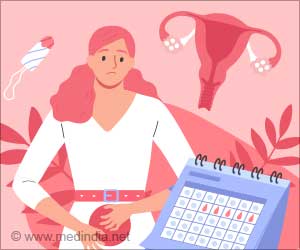The importance of pharmacovigilance programs that monitor drug safety in the market to maintain the quality and safety of consumer medicines, can never be overstated. Apart from monitoring pharma products and their effects overtime, identifying possible risks and side effects and informing the public and medical professionals of updates, pharmacovigilance has to deal with the rising threat of counterfeit drugs flooding the online market and even creeping into some drugstores in some countries.
Jim Tizzard, CEO, TAKE Life Sciences at TAKE Solutions, global leader in providing specialized IT and Life Sciences Services for Life Sciences industry with over 150 top Pharmaceutical companies as customers in US, Europe and India, discusses with Medindia, TAKE’s offerings in Pharmacovigilance space.Q. What is Pharmacovigilance and why do companies need Pharmacovigilance?
A. Pharmacovigilance (PV) is a regulated practice that is required to both gain and maintain market authorisation for products in all major markets. Regulations differ from region to region but all contain similar elements. PV requirements include the assessment of patient safety risks as part of an integrated benefit-risk assessment that is conducted throughout the product lifecycle. A positive benefit-risk balance is required for a product to achieve market authorisation and depending on the benefit-risk balance, post authorisation actions may be required to minimise public safety risks. Once products are authorised, then PV requirements include the ongoing collection, analysis and reporting of adverse drug reactions, the periodic reporting of cumulative safety events and also the detection and analysis of safety signals for as long as the product is available in the market.
Q. Tell us how to devise an effective Pharmacovigilance strategy?
A. Pharmaceutical companies employ dedicated Pharmacovigilance functions to develop and deploy PV strategy. The PV function is usually part of the development or medical organisation and reports to a Chief Medical Officer. With the wide diversity of PV requirements ranging from high volume routine adverse drug reaction (ADR) processing to knowledge of rich benefit-risk assessment, a considered sourcing strategy is a good start in defining PV strategy. Consideration is given to which processes must be performed internally and which processes may be sourced externally to enhance either internal capability or capacity.
Once the sourcing operating model is defined, then effective and integrated processes need to be designed to both protect patients and meet regulatory requirements in a timely and efficient manner. Aligned to the processes is the development of appropriately skilled staff and the deployment of technology configured to simplify the flow of information and to generate insight from the mass of data that is processed within a PV system.
Q. Name the common problems faced by Pharma companies, when implementing Pharmacovigilance?
While these are common activities, often performed globally, the divergence of national and regional regulations mean that companies need to tailor approach to each market in which products are developed and authorised.
Q. How does Business Intelligence (BI) and analytics play a role in Pharmacovigilance?
A. Pharmacovigilance functions collect and process large amounts of data and information. Some of this is submitted to regulatory authorities, who in turn maintain large databases of adverse drug reactions, consolidating information from many market authorisation holders. These databases, both within and external to Pharmaceutical companies are used for detecting safety signals. Safety signals are generally observed as a disproportional occurrence of certain adverse reactions associated with certain drugs. Data mining approaches used to identify such signals are commonly referred to as signal detection. Before any safety signal is confirmed, it is rigorously reviewed by the market authorisation holder with in-depth knowledge of the product and its safety profile. This may in turn require further integration and analysis of various data sets.
Q. How important is the need for Pharmacovigilance in India? (PV trends in India)
A. Compliance with pharmacovigilance regulations is compulsory. Any company, either domestic or foreign, seeking to gain authorisation to market medicinal products in India needs to comply with the requirements of the National Pharmacovigilance Programme of India. The programme is administered by the Central Drugs Standards Control Organisation, which is part of the Government’s Ministry of Health and Family Welfare.
As the domestic Indian pharmaceutical industry seeks to gain market authorisations to export to other countries, then it is compulsory to comply with the local regulations in which each individual market authorisation is granted.
Q. Can you share with us some critical findings from a Pharmacovigilance inspection with some specific examples?
A. The Medicines and Healthcare Products Regulatory Agency (MHRA), the UK government agency responsible for ensuring that medicines and medical devices work and are acceptably safe, has reported that the area where they are currently seeing the most critical findings is in reference to safety information. This can include confirmed safety signals not being added to the product label or product labels not being distributed internally or to prescribers and patients in a timely manner. Market authorisation holders are required to address each finding by way of a Corrective and Preventative Action (CAPA). The detail of inspection findings is often a confidential matter shared between the inspecting authority and the market authorisation holder being inspected. However, where there is deemed to be a real or potential impact on public health, then findings will be made public and, in severe cases, carry with them significant fines.
Source-Medindia









